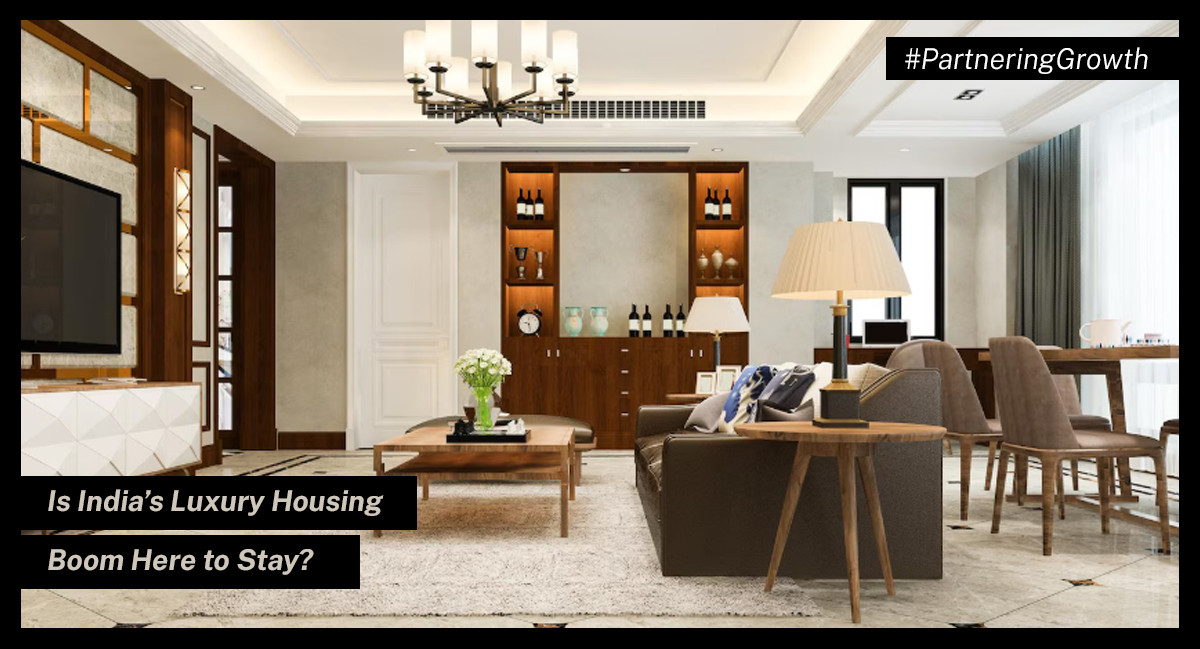


India’s luxury housing market is experiencing a remarkable boom, ceasing to be a niche segment and emerging as a mainstream growth driver. In the first half of 2025, homes priced above ₹1 crore accounted for 62% of all sales across the top seven cities, marking a significant increase from 51% in the same period last year, according to a JLL report . Nearly 7,000 luxury homes, especially those priced at ₹4 crore and above, were sold in these cities, with Delhi-NCR leading sales at around 4,000 units, followed by Mumbai and other urban centres.
This surge is largely fueled by Non-Resident Indian (NRI) buyers and urban aspirants seeking lifestyle upgrades and investment opportunities, underscoring a shift where luxury housing is driven not only by ultra-high-net-worth individuals but also by a growing affluent professional class.
Key Drivers of the Luxury Surge
Rising wealth among high-net-worth individuals (HNIs), favorable government policies, and relaxed Foreign Direct Investment (FDI) norms have strengthened buyer confidence in the luxury segment. Key metropolitan areas such as Delhi-NCR, Mumbai, and Bangalore dominate luxury sales, while Tier-II and Tier-III cities like Amritsar and Dwarka are emerging luxury hubs due to infrastructure development and growing affluence. Developers are focusing on ultra-premium offerings, including villas, gated communities, and smart homes with extensive amenities.
Lifestyle Trends Shaping Luxury Demand
Modern luxury buyers prioritize not only opulence but also privacy, wellness, and sustainability. Features such as smart-home automation, energy-efficient design, air purification, and wellness amenities have become standard expectations. Buyers increasingly seek low-density, nature-integrated settings like hill stations and waterfronts. Luxury today reflects lifestyle values and environmental consciousness beyond traditional measures of size and grandeur.
Sustainability of the Luxury Boom
The luxury housing boom appears sustainable, anchored in strong economic fundamentals, transparent regulations, and evolving buyer preferences. Regulatory reforms such as RERA have enhanced market transparency and buyer protection. Additionally, accommodative monetary policies have lowered borrowing costs, boosting affordability. With continued urbanization, rising incomes, and favourable currency dynamics benefiting NRIs, the luxury housing market is poised for robust, long-term growth across metros and emerging cities.
To summarise, India’s luxury real estate market has transitioned from aspiration to a strategic investment segment. Its sustainability depends on aligning with evolving lifestyle values, technological innovation, and supportive policies, making luxury housing a vital pillar of India’s real estate growth story.
Sources:
Times of India, July 2025(
CBRE-ASsocham Real Estate Report, 2025
CBRE-ASsocham, 2025; Business Standard, July 2025.
Anarock Housing Market Report H1 2025
Knight Frank Residential Update 2025
IBEF Luxury Home Sales Report
RP Realty Plus on Indian Luxury Real Estate
Gangarealty.com Future of Luxury Living in 2025